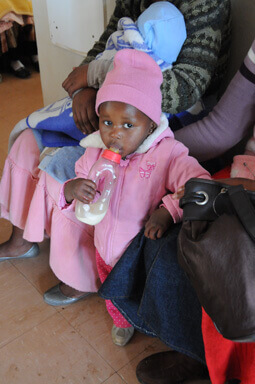Emily HalnonGHTC
Emily Halnon is a communications associate at GHTC.
After Secretary of State Hillary Clinton’s speech at the NIH earlier this week, GHTC asked our member organizations involved in HIV and AIDS why the US should continue to prioritize HIV and AIDS research. Here are answers from three of our members working on this issue:
Elizabeth Glaser Pediatric AIDS Foundation:

Discovering the medical interventions to prevent mother-to-child transmission of HIV (PMTCT) is one of the great success stories in the thirty-year fight against HIV and AIDS. But we cannot finish the job of eliminating pediatric AIDS worldwide without continued research. To implement the science that we do know, operations research is needed to address the global gaps in PMTCT coverage. Further clinical research is also needed to understand why approximately 60% of babies who are exposed to HIV from their mothers and receive no medical interventions still do not become infected. Answering this question could help in the development of an HIV vaccine that is safe and effective for children and adults, and provide lifetime immunity to the virus.
International AIDS Vaccine Initiative:
US support of HIV and AIDS research, including new HIV prevention tools, is vital to bringing an end to a pandemic that has taken and affected millions of lives in the US and worldwide, as well as cost the global economy billions of dollars. These investments also keep the US on the frontier of scientific innovation, as the lessons learned in trying to stop one most formidable foes ever encountered by scientists hold potential across many areas of medicine.
Global Campaign for Microbicides/PATH:
The generosity of the American people invested in HIV research can not only help to save the lives of poor people in other countries most greatly affected by HIV—but that same generosity can benefit the American people whose lives can also be saved by the same innovations. The world is a small place. As good global neighbors, prioritizing HIV research can help save the lives of poor people in not-so-distant lands. The same innovations in HIV treatment and prevention can save the lives of our neighbors much closer to home.